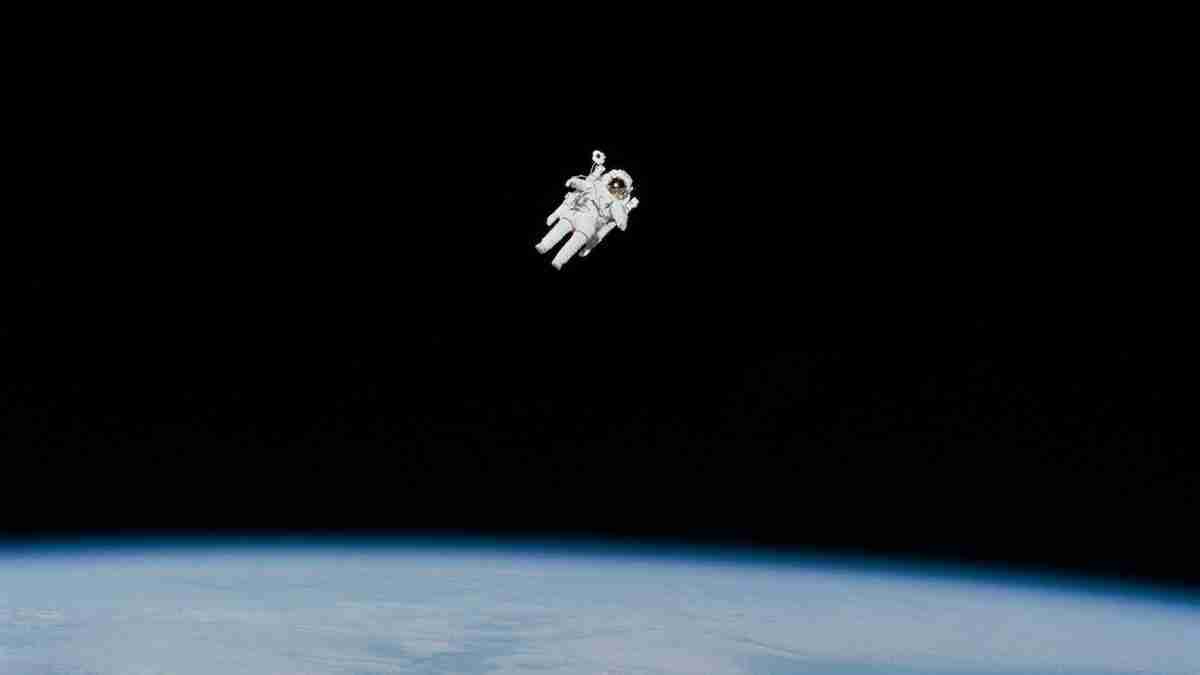22 Fun Facts About Gravity To Wow Your Friends
1. The force of gravity is what keeps us on the ground and prevents us from floating off into space.
Gravity is one of the fundamental forces of our universe, a powerful driving force that exists all around us. We often take our close connection to gravity for granted, yet without it, life would be unrecognizable.
From giving structure and purpose to planets and galaxies to making basic human interactions possible here on Earth, the pull of gravity permeates every aspect of reality.
One such formative application of gravity can be seen in its ability to keep us grounded here on the planet’s surface. People forget the very real notion that without – this force that works by attracting two objects toward each other.
2. The strength of gravity depends on two things: the mass of the object and the distance between the objects.
Gravity affects the physical world we live in profoundly. Its strength depends on two key elements: the mass and distance between objects.
Objects with higher mass attract one another more deeply, and this attraction increases when the distance between them is less.
The relationship between these two variables is complex yet powerful, ever reminding us that physical phenomena are intertwined and affect our lives daily.
Whether a swarm of atoms pulling apart or a magnetic pull bringing them together, gravity’s power is undeniable and an ever constant reminder of our connection to all living things in the universe.
3. The force of gravity holds the planets in orbit around the sun and keeps the moon orbiting around Earth.
The sun is the center of a celestial symphony, its gravitation force playing a major role in planet orbits. Gravity binds the planets to their orbit and is responsible for keeping them on course as they speed around their music conductor.
It also has an adjacent effect: keeping the moon orbiting in close vicinity of our home Planet Earth. Playing like bright marbles, the random chaos that appeared at first glance seamlessly merges into one great harmonious orbital swell, all obediently responding to this mysterious and invisible arcane energy that metaphorically draws circles around our heads like beaded curtains ages ago.
4. The force of gravity gets weaker the farther away you are from an object. This is why astronauts in space feel weightless, as they are farther away from the massive Earth.
A crucial physical phenomenon, gravity weakens with increasing distance from an object. Therefore, astronauts experience a lack of weight as they hover in space and are significantly farther from the obese planet, Earth.
Intuitively, this should make sense to us all: closer to a large mass we feel the effects more powerfully than someone located further away. With such immense terrestrial vehicles hurtling through Space, this invisible and mysterious force plays an incredible role in helping them stay on track.

5. The first person to propose the idea of gravity was Sir Isaac Newton in 1687 with his theory of universal gravitation.
Sir Isaac Newton’s year was 1687, a date renowned for being the same year in which he first proposed his theory of universal gravitation.
Newton’s proposal centered around the notions of gravity — that it affected every object, regardless of size or shape. His revolutionary idea changed physics forever, becoming widely utilized and accepted across the academic world.
By creating an explanation that corresponded with gravitational forces in all parts of the universe, Newton formulated what we now refer to as “the law of gravity.”
Through hard work and dedication, Sir Isaac propelled science forward significantly with his astounding theories and principles.
6. The gravitational pull of a black hole is so strong that not even light can escape it. This is why they are called “black” holes.
Sir Isaac Newton year was 1687, a date renowned for being the same year in which he first proposed his theory of universal gravitation.
Newton’s proposal centered around the notions of gravity — that it affected every object, regardless of size or shape. His revolutionary idea changed physics forever, becoming widely utilized and accepted across the academic world.
By creating an explanation that corresponded with gravitational forces in all parts of the universe, Newton formulated what we now refer to as “the law of gravity.” Through hard work and dedication, Sir Isaac propelled science forward significantly with his astounding theories and principles.
7. The force of gravity can bend light, this effect is called gravitational lensing and it was first observed in 1919 during a solar eclipse.
The force of gravity has a unique capability – it can warp and bend light. This phenomenon is known as gravitational lensing, first discovered by astronomers in 1919 while they were observing a solar eclipse.
To capture its effects, the observers had to effectively line up two points in the sky beyond the eclipsed sun, even at deeply differing distances from Earth.
While centuries of research had driven understanding of gravity’s effect on large masses, this subtle alteration ushered in an awareness that its power could modify dimensions across enormous chasms of space too.
Stretching one source for far out cosmic bodies back along time’s ancient paths, to us through a lens touched by relativity’s grip was a revelation about the depth of physics that shaped our universe.
8. The strength of the gravity can be measured by an instrument called a gravimeter.
Understanding the mechanics of gravity is an incredible feat. With advanced technology, it’s possible to quantify its strength with a special instrument called a gravimeter.
From this instrument, any gravitational pull, whether close to the Earth or further away can be measured accurately and precisely.
This can help scientists in formulating theories and ultimately, lead to unlocking the secrets of gravitation yet undiscovered.
The limits may never be reached–what other insights might the gravimeter help probe?

9. The study of gravity and its effects on the universe is known as gravitation.
gravity and its effects on the physical world. This branch of physics is an intricate, important study; it helps humankind to understand how our physical world functions beyond just a superficial level.
With a greater understanding comes boosted knowledge, which has prompted human advances in diverse technologies while possibly discovering previously unknown concepts. Our existence prioritizes approaches necessitated to be able to completely recognize the behavior of forces in meeting concentrations and alteration in heights.
Gravitation stretches from observations based on seventeenth century physicist Isaac Newton’s Law of Universal Gravitation throughout other areas his neophyte interpretation enabled us all to eventually ponder including quantum mechanics, cosmology, and relativism theories.
Just about all rely directly on or ultimately on gravitation’s power holding an immense influence across all matters pertaining toward its purview affecting everything from ocean tides and weather behavior through to spacecraft trajectories–it shows its potent touch inside existing between every matter existing sufficiently near for its process for being reigning over bulk correspondences.
10. The gravitational pull of the Earth is what causes the tides to rise and fall.
Our planet Earth is tugging at the sea, causing the water to rise and fall each day.
This phenomenon is known as the tide–driven by forces more powerful than we can hope to understand! Gravity’s near-constant pull on everything keeps oceans moving all around the world in this rhythmic way.
By harnessing its power, humans have been able to observe currents for centuries and use them for navigation, making it possible for us all to take advantage of what nature has given us.
11. The weight of an object is not the same as its mass. Weight is the measure of the force of gravity on an object, while mass is the measure of the amount of matter in an object.
Weight and mass are two distinct measurements, each relaying its own unique measurement.
Weight—the measure of the force of gravity on an object—provides information independent of external surroundings; while mass reveals the quantity of matter within an object, simply put: how much stuff there is inside.
Moreover, we’re able to detect changes in these quantities and draw conclusions from their varying comparisons. With weight, it can fluctuate with the location and context in which it’s measured; whereas mass maintains a relatively reliable predictability no matter its position relative to our planet’s natural pull.
12. The strength of gravity on the surface of Mars is about one-third that of Earth.
Mars is a wonderful but challenging planet. Its gravity is only about one-third compared to Earth’s.
For example, a human walking on the surface of Mars would feel a lighter pull from gravitational forces than what we experience here on Earth.
The strength of gravity on the red planet pales in comparison! Despite this, however, it still takes 2637 days for The Great Red Planet to make just one complete revolution around Sun — an impressive feat that emphasizes that its ‘lesser’ gravity still has enough clout for Martian endeavors!
13. The force of gravity is what keeps the Earth and the other planets in our solar system moving in their orbits around the sun.
Gravity, one of the four fundamental forces, is keeping our planets in constant orbit. Each body is tethered to their elliptical paths and it’s thanks to this rare force of Nature.
We are orbited by Mercury, Venus, and Mars on the inner track, whilst the far larger gaseous giants like Jupiter, Saturn, and Uranus are sat towards the outer rim.
Finally at the farthest edge of our reach lies Neptune who has an invite from the sun across a span of 2.8 billion kilometers as part of his celestial spinning routine. Intertwined within these immense distances accelerates planetary movements along trajectories carved over millions of years.
Thereby ensnaring us with a tantalizing glimpse at its predecessor lifeforms, processes profound nature reserves and untapped resource reservoirs both here on Earth and farther afield amongst alluring reaches of space allocation around missing golden sunlight specks blanketing our solar system canvass canvas in lush cosmic splattering’s
14. The strength of gravity decreases as you move away from the center of the Earth. This is why objects weigh less at higher altitudes.
Have you ever noticed that objects weigh less the higher you go? This is because, although the Earth’s gravity pulls us down towards its center, the strength of that gravity decreases as we move away from it.
Have you ever found yourself appreciating the miracle of freefall a little bit more while flying through an airplane? That might be due to less pressure from gravity at greater distances.
Next time you find yourself heading off on a trip that involves altitude, keep in mind how this celestial science shapes all parts of our lives; from how paperclips are attracted to ventilation when dropped from your office to the metaphorically light feeling of better horizons up ahead.
15. The gravitational pull of the moon is responsible for causing the tides on Earth.
The moon has an enormous effect on our planet. Its gravitational attraction across hundreds of thousands of miles affects every single ocean, sea, river, and lake on Earth in the form of rising and falling tides.
The phases of the moon also determine the size of these oceanic swings; when it’s full, masses are gravitationally encouraged to reach their greatest point — high tide — before slowly ebbing away again until the next moon-influenced tide approaches.
Our own immense early waves owe their rise and fall to our companion in deep space, the moon.
16. The gravitational pull of the Earth is what keeps the atmosphere from escaping into space.
Earth’s gravity has an important role to play in protecting our atmosphere. It keeps the planet’s protective blanket of air tugging it downward against the force that threatens to pull it skyward into space.
Without its gravitational pull, Earth’s atmosphere would be consumed by the vacuum of outer space, leaving us to experience harsh temperatures, freezing and unfiltered sunlight, and a perpetual bombardment of unknown particles.
Fortunately, our planet’s metallic core and intense mass produce sufficient gravitation to protect us from these harsh and inhospitable conditions outside our world. This gravitational lock on our atmosphere forms a perfect environmental shield for all lifeforms here on Earth!

17. The force of gravity is what keeps the galaxies together and prevents them from flying apart.
The force of gravity is a powerful one, capable of great movements, even on interstellar levels. It may be impossible to fathom the great power this kind of attraction has across outer space, but it’s evident in its impact.
Everywhere you look, the countless galaxies in our universe are held together by the law of gravity. Pulling in each and every particle from millions of miles away and keeping them secure on their celestial planes, effective gravity prevents all-stars from being propelled into infinite voids beyond our reaches.
With no gravitational force, scientists suggest galaxies would drift apart rather quickly and what was once distantly intertwined would be a limitless black abyss with particles falling infinitely for many more billions of years to come.
18. The strength of gravity is affected by the presence of other massive objects nearby, such as the sun, moon, or other planets.
Gravity can be a powerful force, particularly if there are dominant masses near us, like our beloved sun and moon. The sun, with its orbiting planets, is an example of gravity’s weight compressing one large and commanding mass in close proximity to the earth.
The gravitational force then stands in the middle, bridging between heavenly bodies, such as the resulting orbits we witness here on planet earth.
Even extraterrestrial or other planetary satellites close by can massively disrupt the gravitational pulls and influences nearby objects may have upon each other.
In such circumstances, we can observe the teeter-totter behavior of the two active forces at work.
19. The force of gravity is what causes objects to fall to the ground, but it is also what causes the planets to move in their orbits.
Gravity plays a number of curious and fascinating roles in our universe. Firstly, it acts as a force causing objects to fall towards the ground when free-falling.
But gravity extends beyond this Fundamental Law of Motion to have an even greater impact on our universe.
Not only does its incredible pull keep planets balanced in their orbital paths, but also is responsible for endless wonders we observe in space, ranging from comets racing through the skies to distant galaxies slowly drifting further away from us as time passes by.

20. The strength of gravity decreases with altitude, which is why skydivers experience weightlessness.
Have you ever wondered why a skydiver enters a state of weightlessness? Well, to answer this question we need to understand the tug of gravity combined with activity levels.
The strength of gravity continues to decrease as the altitude increases and thus, those flying through the air experience the temporary absence of their body weight!
One thing is for sure, when rejoined with terra firm or ‘earth’, their bodies will return to their normal physical sensation.
21. The gravitational pull of the Earth is what holds the atmosphere in place.
The Earth’s gravitational force is powerful enough to knit together and adhere to the atmosphere surrounding our planet.
The delicate balance of this atmospheric blanket relies completely on the power of gravity.
Without it, the gasses that constitute our atmosphere would disperse rapidly, leaving us feeling the negative effects of unprotected harshness from outer space.
Gravity is the anchor that holds and secures the atmosphere so vital in the magical cycle of life here on Earth.
22. The gravitational pull of the Earth is what keeps the water in the oceans from flowing out into space.
The Earth exerts a powerful force known as gravitational pull. This incredible pull is what helps to keep the immense waters of the oceans rooted in vast expanses of land around the globe.
In other words, it’s what prevents our oceans from losing enough liquid that they would come crashing out into space!
The constant pulling force of gravity works like an invisible boundary, keeping our beautiful, life giving oceans secured for us on planet Earth.








